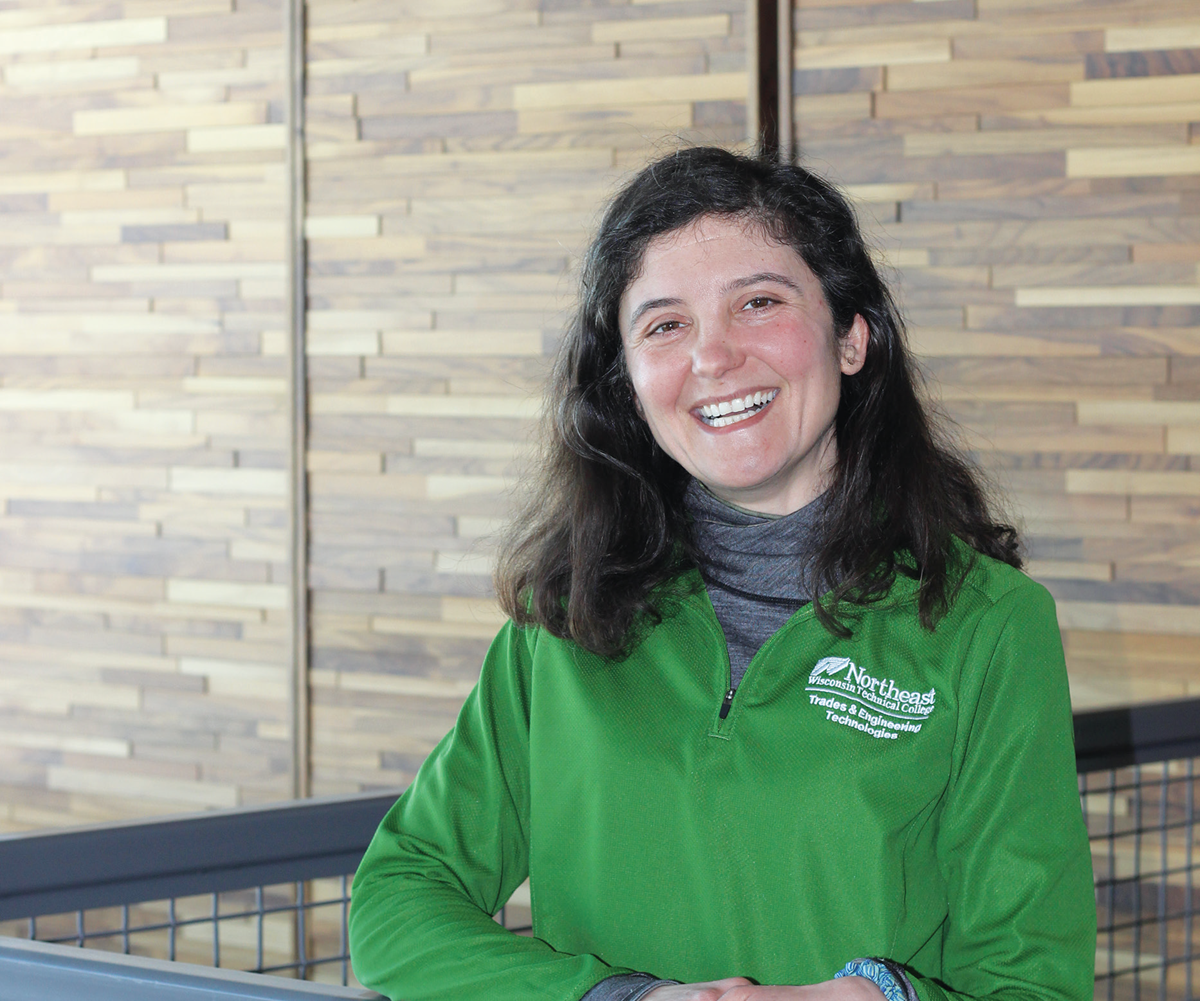NWTC instructor chosen for international renewable energy team

Energy Management instructor Jennifer Brinker could help the United States go greener.
Brinker is one of nine instructors nationwide selected by the National Science Foundation to study renewable energy in Germany and share what they learn with two-year colleges throughout the United States.
U.S. instructors could have much to learn from Germany. Renewable energy provides 40 percent of Germany’s public electricity generation, compared with 17.7 percent in the United States. One reason Germany has pulled ahead is advanced storage technology, which makes their energy supply stable and safe.
“Renewable energy can be intermittent,” she said. “Wind and solar will only produce electricity when there’s wind or sun available. In a climate like ours, there may be 11 sunny days in the month of November, so we wouldn’t have much energy. And of course, the sun sets every day. There are other renewable energy sources such as biogas from digestion; they still have to be shut down for maintenance. We need a constant source.”
Brinker is the lead instructor for the Energy Management Technology program, which teaches students to monitor a facility’s energy consumption and evaluate efficiency opportunities. Students say the enthusiasm their top teacher brings to the classroom is likely to carry over to her mission to spread news learned in Germany.
“It’s been a blast,” said Jerry Mocco, who was studying physics and chose Energy Management after hearing Jenny praise the field. “I love everything. A lot of our class time is dedicated to performing field work, so our homework assignment might be, ‘Go and research, find out some ideas, we’ll talk about it in class and see what the next step is.’ It’s like we’re doing the process on our own, and she’s there to help us whenever we need a hand.”
Graduate Michael Leone said the work itself has continued that inspiration. “It has been very rewarding. Some systems we worked on had never operated right since installation, so when we got the system working right, we really won them over. It’s great seeing customers happy about how their building is performing, and it makes their job easier.”
“The clients in this industry are great,” Leone added. “They’re not just concerned about reducing cost, but reducing their use of limited resources. It’s also very rewarding to know you’re making an impact on energy reduction, which has a domino effect for everyone on Earth.”
Effective storage will make both renewable and traditional energy systems more reliable, Brinker said. “Right now, if a power plant were to go out, it’s not as easy to switch to a continuous power supply as it would be if you had storage on site.” She said Elon Musk, CEO of Tesla and SpaceX, built an energy storage facility in Australia, and when the power went out, it took less than a second before the stored power kicked in.
“There are also things like pumping water uphill when you have extra energy, then using hydro plants to reclaim that. Germany does pump storage as well as battery.“
NSF and the Center for Renewable Energy Advanced Technological Education (CREATE) are offering
the Energy Storage Project so schools can better prepare students for future energy careers. Faculty participants will analyze what new skills colleges need to teach, add what they’ve learned to current energy courses, and share their results with other U.S. instructors through online and in-person presentations.
The Energy Storage Project is funded by the NSF Advanced Technological Education Program, grant award
number 1800893.